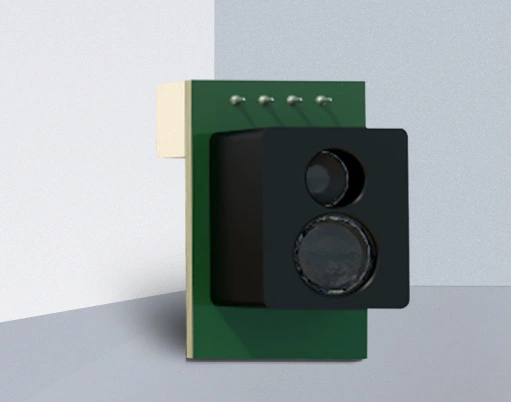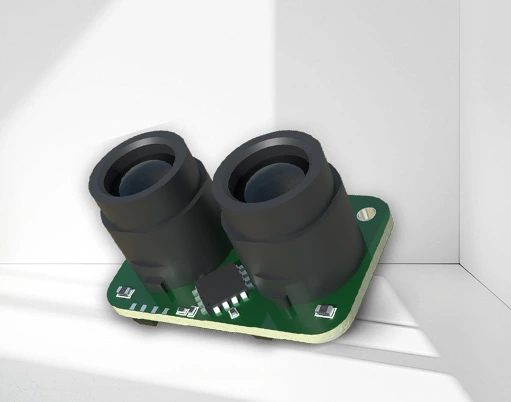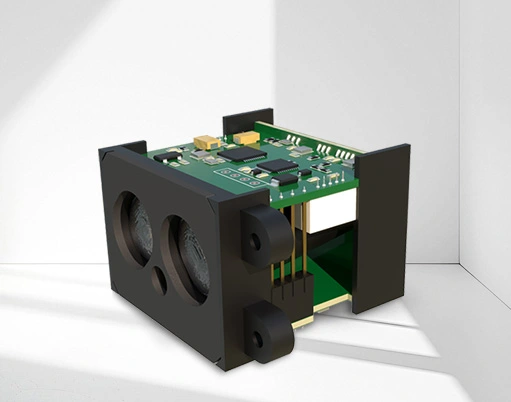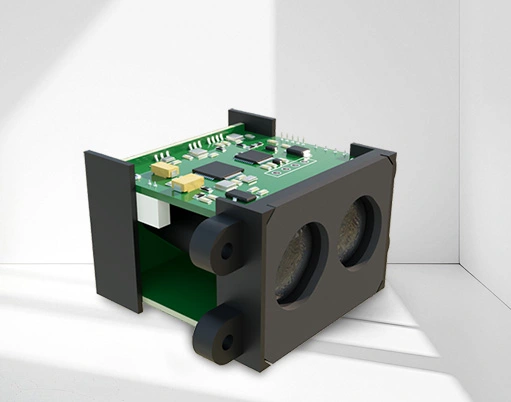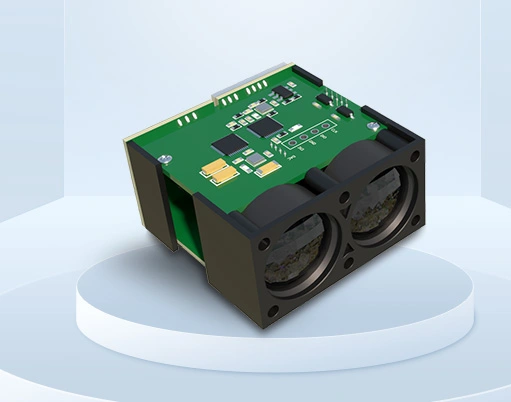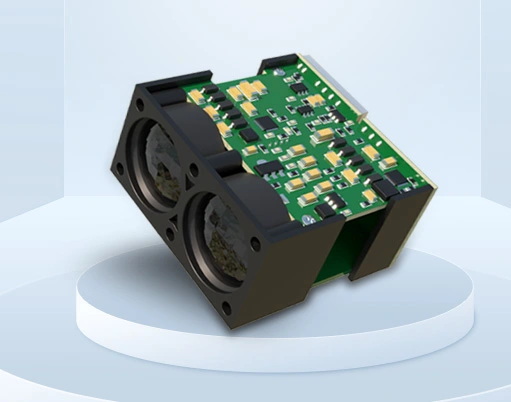
The application of LiDAR in vehicle detection has become a key technology in the fields of intelligent transportation, autonomous driving, and safety assistance due to its high precision and strong environmental adaptability. The following will explain from the aspects of application scenarios, technical principles, core advantages, and practical cases:
1、 Core application scenarios
Lidar constructs a three-dimensional point cloud model of the surrounding environment by emitting laser beams and receiving reflected signals, thereby accurately detecting the position, speed, direction, and other information of incoming vehicles. It is mainly used in the following scenarios:1. Autonomous driving vehicles (ADAS/autonomous driving)
As one of the "eyes" of autonomous driving, LiDAR can detect incoming vehicles in real-time, including cars, trucks, motorcycles, etc., to assist vehicles in lane keeping, automatic avoidance, and intersection passage.
For example, at an intersection without traffic lights, LiDAR can identify vehicles coming sideways in advance, calculate collision risks, and trigger deceleration or parking commands.
2. Intelligent Transportation Systems (ITS)
Lidar installed on roadside, traffic signal poles, or elevated bridges can monitor incoming vehicles in specific areas (such as intersections, ramps, tunnel entrances and exits) around the clock, track traffic flow, identify illegal lane changes, and warn of congestion or accident risks.
For example, at the entrance of a highway ramp, LiDAR can detect the speed and distance of incoming vehicles on the main line, providing safety alerts for merging vehicles.
3. Vehicle safety assist device
Used for blind spot monitoring of commercial vehicles (such as trucks and buses), LiDAR can cover the blind spots in the driver's line of sight (such as the right side and rear of the vehicle). When it detects approaching vehicles or pedestrians, it alerts the driver through sound and light alarms to avoid collision accidents.
In the parking lot scene, LiDAR can assist vehicles in detecting incoming vehicles in the channel, achieving automatic avoidance or low-speed passage.
4. Railway and Rail Transit
At railway crossings or along rail transit lines, LiDAR can detect whether vehicles (such as cars and tractors) have entered the track area, promptly triggering the closure of crossing railings, sound and light alarms, and even linking train deceleration.
2、 Technical principles
The core process of LiDAR vehicle inspection includes:1. Laser emission and echo reception
Lidar emits high-frequency laser pulses (usually near-infrared light) through a transmitter, which reflect off objects such as vehicles and are captured by a receiver.
2. Distance and azimuth calculation
Calculate the distance between the LiDAR and the incoming vehicle based on the Time of Flight (TOF) or phase difference of the laser pulse; Determine the horizontal and vertical orientation of the incoming vehicle by combining the rotation angle of the radar or the layout of the multi line array.
3. Point cloud data processing and target recognition
A large number of laser pulses are reflected to form a three-dimensional point cloud, and algorithms such as clustering, segmentation, and feature extraction are used to identify "vehicle" targets from the point cloud, eliminate interferences such as pedestrians, trees, and guardrails, and extract features such as vehicle contours, sizes, and motion trajectories.
4. Dynamic tracking and risk assessment
Continuously track the identified incoming vehicles, calculate their speed, acceleration, and direction of motion, evaluate collision risk (such as TTC, collision time) based on their own (or the vehicle's) position and motion status, and output warning or control signals.
3、 Core advantages compared to other sensors
| sensor type | Advantages of LiDAR | limitation |
|---|---|---|
| Camera | Not affected by lighting (stable at night and backlit), it can directly obtain three-dimensional distance information without relying on visual algorithms for "depth estimation" | High cost; High complexity of point cloud data processing |
| millimeter wave radar | Stronger resistance to severe weather (reliable operation in rainstorm, fog and dust environment), high reflectivity to metal objects (vehicles) and good detection stability | Low resolution makes it difficult to identify vehicle details |
| Ultrasonic radar | High measurement accuracy (close range), able to penetrate some obstacles | Short detection range (usually less than 5 meters), not suitable for high-speed scenes |
In short, LiDAR is24/7 environmental adaptability(Overcoming the effects of light and weather) andAccurate modeling in three-dimensional spaceThe advantages of it make it an indispensable supplementary technology in vehicle inspection.
4、 Practical application cases
1. autonomous vehicle
Tesla (some models) Waymo、 In the auto drive system of Xiaopeng and other enterprises, the laser radar (or integrated with other sensors) is used to detect incoming vehicles. For example, Waymo's LiDAR can detect incoming vehicles from 100 meters away and predict their driving trajectory, ensuring safe passage for autonomous vehicles at complex intersections.
2. Intelligent intersection monitoring
In the pilot projects of smart transportation in some cities in China, laser radar (such as products from Huawei and Sagitar Juchuang) is installed at intersections to monitor the traffic flow and speed in all directions in real time, dynamically adjust the duration of signal lights, and alleviate traffic congestion.
3. Commercial vehicle blind spot warning
In Volvo Trucks' Blind Spot Information System (BLIS), LiDAR is combined with cameras to detect incoming vehicles in the blind spot on the right side of the vehicle. When there is a risk of collision, it alerts the driver through steering wheel vibration or sound and light alarms.
summarize
Lidar achieves high-precision, all-weather target monitoring and tracking in incoming vehicle detection through three-dimensional environment perception and strong anti-interference ability, providing key technical support for autonomous driving, intelligent transportation, and vehicle safety assistance. With cost reduction and algorithm optimization, its application scenarios will further expand, driving the transportation system towards a safer and more efficient direction.

























